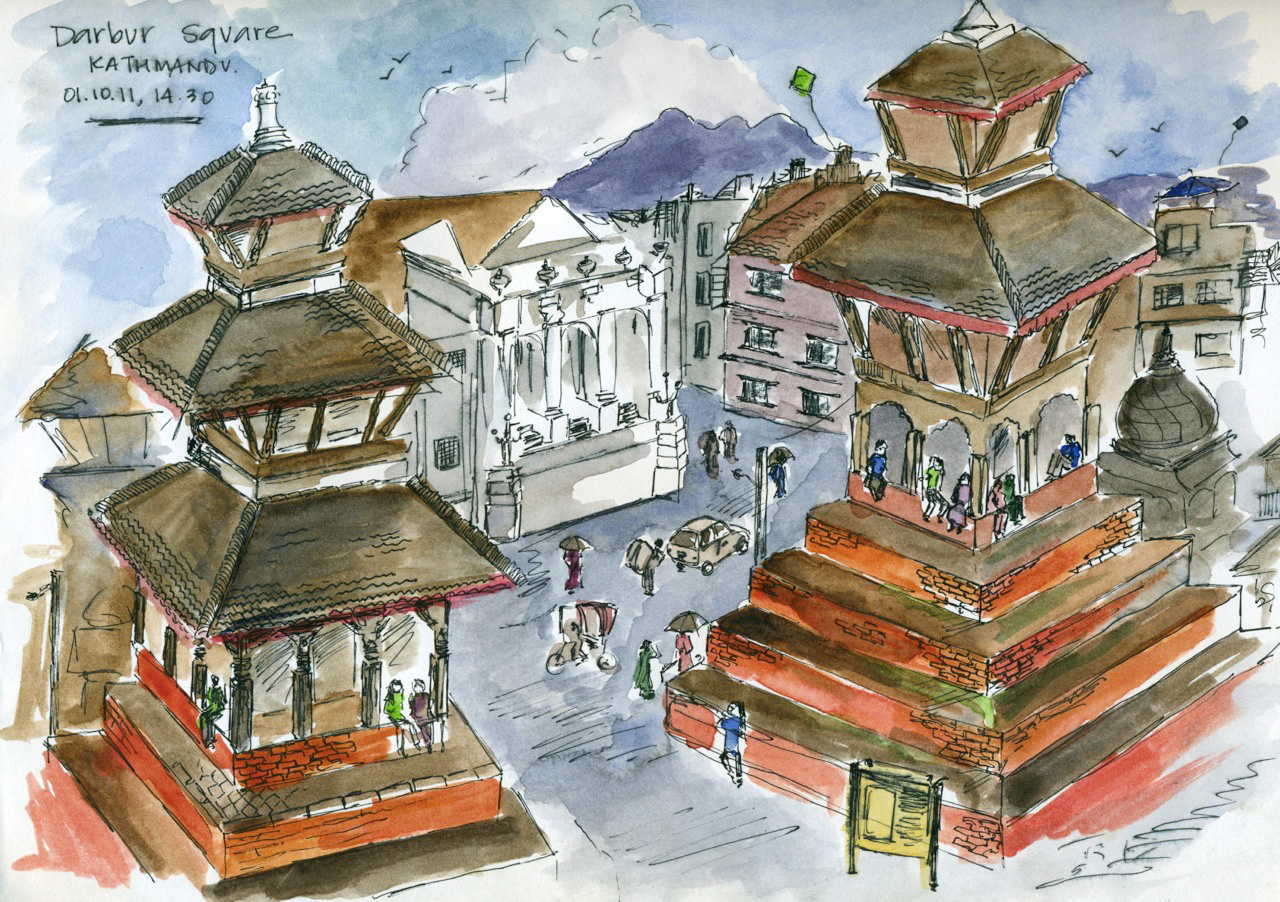Kites and Connection in Kathmandu

Candace Rose Rardon is an American writer, photographer and artist who recently returned to the United States after ten months living and traveling in Asia. She sketches as she travels, and these sketches, combined with the stories behind them, charmingly capture those fleeting, layered moments that are the stepping stones of travel. Wanderlust will be presenting her on-the-road sketches-and-stories — her sketchbook of serendipities — in the months to come.
Kathmandu was supposed to be magical. I arrived with visions of prayer flags and snow-peaked summits in my mind, only to find dirty streets lined with rubbish. My first morning was spent at the Swayambhunath Stupa, but fighting touts and crowds of other tourists left me feeling no more connected to the city.
While walking back towards the center, I glimpsed what looked like the tiered roofs of a pagoda. Even as they disappeared behind more buildings, I remembered the sketchbook and watercolors in my backpack and suddenly had a new vision of Kathmandu: me, positioned on a rooftop café, painting the pagodas from above.
They turned out to be temples from the mid-16th century and were the focal point of Durbar Square. And as though my wish caused it to appear, looking out over the square was a tiny establishment called the Barja Café, nothing but a few tables four stories up. With my sketchbook and a fresh lime soda, Kathmandu finally revealed itself to me.
For the first time all day, I saw beauty: in the tile-roofed temples, in the stately white columns of the Gaddi Durbar palace, and in the many kites reaching ever higher to the goddess Durga, in celebration of the Daishan festival.
I would come across two young boys later that afternoon – Rojeet and Suraj – in a run-down lot bordered on three sides by apartment blocks. I would stand among endless rows of towels and sheets hung out to dry, watching the boys attempt to fly a tattered paper kite. The kite never stayed aloft for long – at best, it would catch a faint breeze and occasionally reach above the clotheslines.
Suraj explained that kites were flown every year during the festival as a symbolic request to Durga not to send any more rain. For me, the symbol was the image of the two boys running back and forth across the lot – holding tightly to a wooden spindle of string, sending their kite into the air again and again and again.

